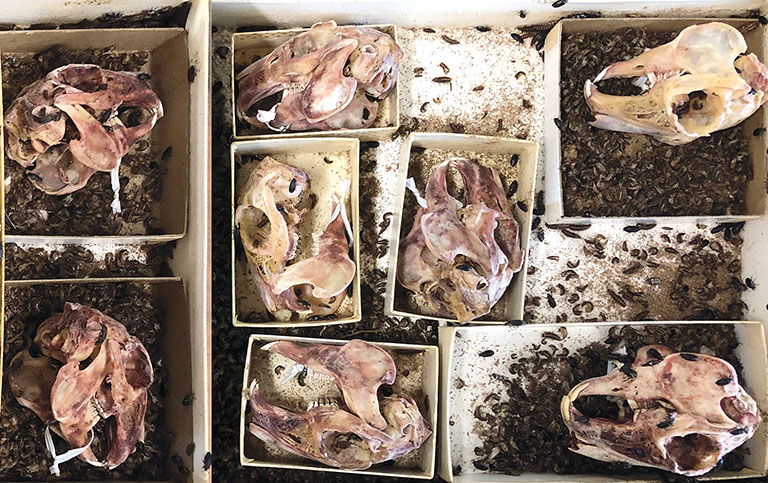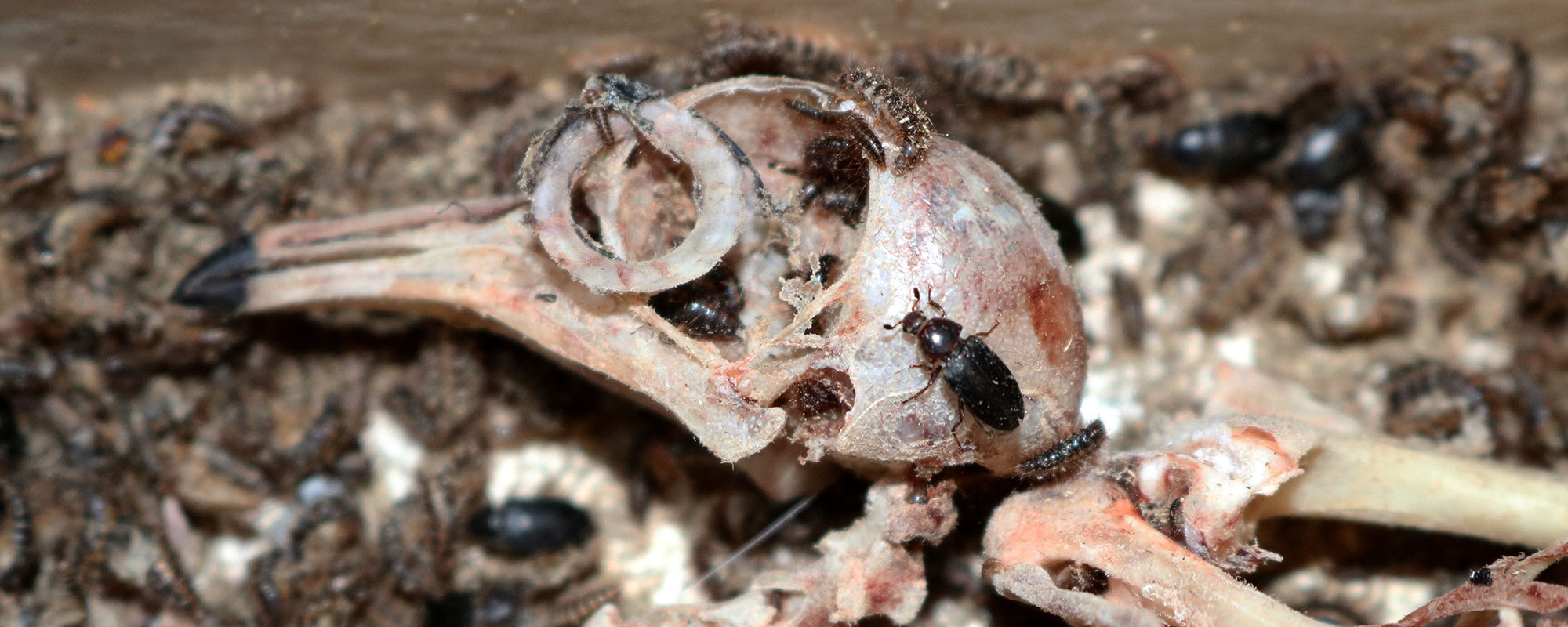You May Also Like
A Lifelong Love of Astronomy Closer Look: Walking the Land Restoring A ‘Palace of Music’To preserve animal bones for decades of study, the museum employs a colony of flesh-eating Dermestes maculatus, or hide beetles, to play cleanup crew, leaving no part of skeletons untouched.
On a late April afternoon, thousands of little black beetles and setae-studded larvae—all fast and fastidious eaters—are swarming 30 rabbit skulls at rest inside a pair of aquariums. The bugs are gnawing away at the skulls at the request of craniofacial biologist Gregory M. Cooper, the director of UPMC Children’s Hospital of Pittsburgh’s Pediatric Craniofacial Biology Laboratory. Cooper and his colleagues perform surgery on rabbits to develop improved treatment for children with craniosynostosis, a birth defect in which one or more of the fibrous joints between the bones of a baby’s skull close before its brain is fully formed. One in 2,000 children is affected.

The museum’s flesh-eating beetles strip rabbit skulls and a pigeon (at top) to the bone, expediting the preservation process. It takes the beetles about a week to fully clean most specimens—from snakes to lizards to birds.
No longer having access to his own beetle colony, Cooper approached Stephen Rogers, the museum’s collection manager for birds who oversees the museum’s beetle colony, about cleaning the skulls. Cooper’s lab keeps all finished research specimens, along with associated data about the abnormal growth of the rabbits, with plans to make the archive accessible to other researchers.
Natural history museums have been using beetles to clean specimens since as early as the 1920s. In Rogers’ 38-year career at the museum, he estimates that he and the beetles have teamed up to clean some 10,000 birds, 4,000 amphibians and reptiles (turtles, snakes, lizards, and frogs), an occasional fish, and about 1,000 mammals. Over the years, he’s done contract work for the Pittsburgh Zoo and the National Aviary, working on, among other things, skulls of a giraffe, tiger, and gorilla. When he doesn’t have museum-related specimens to feed the beetles, Rogers, an avid outdoorsman, brings in his own deer and other local wildlife.
“If we had to boil or hand pick the specimens, it would take an amazing amount of work and time,” says Rogers. “If you run the colony well, they clean up everything really beautifully.”
To prepare specimens for a trip inside one of the aquariums within the small dermestid beetle building (located in an adjacent, non-public outside courtyard), Rogers tags, skins, and eviscerates them—removing any large chunks of meat and, depending on the size and group, brains and eyes—and then places them in front of a fan until they’re “jerky [consistency] dry,” he says. “The beetles take care of the rest.”
Receive more stories in your email
Sign up
